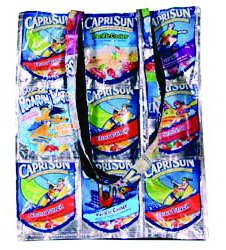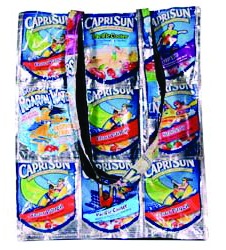 Recycling gone awry.Photo: Rosenfeld MediaEverything you think you know about sustainable design is wrong. That’s the message of one of the most compelling and potentially disruptive essays on the subject since Buckminster Fuller unleashed his special brand of crazy on a world that was just waking up to design as a weapon in the war on our growing ecological debt.
Recycling gone awry.Photo: Rosenfeld MediaEverything you think you know about sustainable design is wrong. That’s the message of one of the most compelling and potentially disruptive essays on the subject since Buckminster Fuller unleashed his special brand of crazy on a world that was just waking up to design as a weapon in the war on our growing ecological debt.
The designers who decide the form of all our junk are, for the most part, agents of death:
“There are professions more harmful than industrial design, but only a few of them.” [Victor Papanek said in his seminal book Design for the Real World.]
… [T]here is no getting over the fact that the majority of product designers earn their living supplying growth-dependent economies with novelties for our ever-more-insatiable appetites.
But sustainable design is currently about as sexy as a pile of wet lint:
Increasingly, many of those objects are being presented as sustainable. Perhaps packaged in brown cardboard with little green arrows on it.
“Sustainability.” I have never much liked the word. “Sustainable” is not an adjective you would use to describe something you love. To sustain something is to keep it alive, pure and simple — more of a duty than a passion. Once, we aspired to reach the moon; now, we just hope to hold on to what we’ve got. Sustainability suggests the flatlining of human ambition.
“Sustainable design” is mostly a gigantic failure of imagination practiced by fopsters and stache-holes:
The majority of work in this area is not particularly impressive. Most conforms to a material palette we think of as sustainable — lots of wood, cardboard and paper — or makes a show of using recycled materials. In that respect, there is a kind of sustainable design aesthetic, and it comes in shades of brown. Plastic rarely features, no doubt due to an instinctive feeling that it’s inherently bad for the environment, even though plastic is sometimes the most environmentally friendly material for the job. It uses less energy to manufacture than glass or metal, and it’s lighter to transport. The trick is to keep it out of landfills.
And art school is hardly a substitute for training in life-cycle analysis:
The problem is that consumers, and often designers, too, are bewildered by what really constitutes a sustainable product. You can’t judge it by looking it at; you have to know the object’s past and future — whether it’s made of renewable or recyclable materials, how much energy went into its production, how it’s going to be disposed of. It’s not objects that are unsustainable, it’s the systems that produce them.
The closest we have come to a sustainability orthodoxy is the “cradle to cradle” solution pioneered by Michael Braungart and William McDonough. According to their mantra, products need to be made fully recyclable so that, once they are discarded, each part can be turned back into itself again. The problem with that logic is that it promises infinite consumption with impunity. Businesses must love it. The drawback of putting so much emphasis on recycling, however, is that it makes us feel virtuous about throwing things away. Disposability — along with its henchman, planned obsolescence — is the real enemy.
Can “sustainable design” ever succeed as long as its wedded to the ideology of consumption and planned obsolescence?
The answer, it seems to me, is to buy fewer things that we value more: to design products that endure and that we can repair more cheaply than replace. And the real way to win the public over to sustainable design is not with a war of words but by tapping into their desires. We want things with sex appeal, not ones that look as though they are made of Weetabix.




